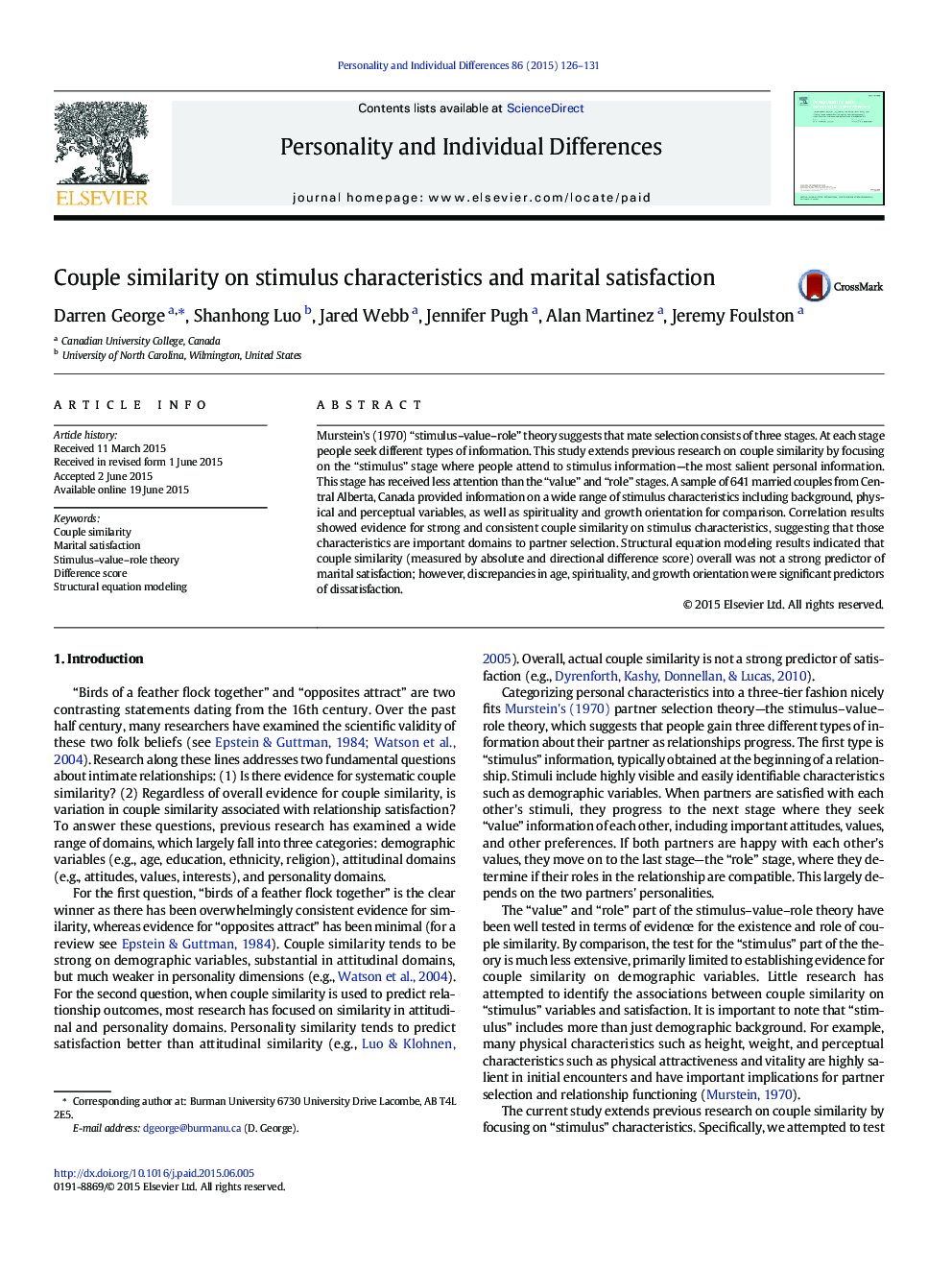| Article ID | Journal | Published Year | Pages | File Type |
|---|---|---|---|---|
| 889967 | Personality and Individual Differences | 2015 | 6 Pages |
•A sample of 641 married couples from Central Alberta tested the influence of stimulus factors on marital satisfaction.•Stimulus characteristics of married couples are highly correlated and often predictive of marital success.•Discrepancies in age, spirituality, and growth orientation significantly predict dissatisfaction.•Structural equation modeling explores the varied influence of direction and non-directional differences between couples.
Murstein's (1970) “stimulus–value–role” theory suggests that mate selection consists of three stages. At each stage people seek different types of information. This study extends previous research on couple similarity by focusing on the “stimulus” stage where people attend to stimulus information—the most salient personal information. This stage has received less attention than the “value” and “role” stages. A sample of 641 married couples from Central Alberta, Canada provided information on a wide range of stimulus characteristics including background, physical and perceptual variables, as well as spirituality and growth orientation for comparison. Correlation results showed evidence for strong and consistent couple similarity on stimulus characteristics, suggesting that those characteristics are important domains to partner selection. Structural equation modeling results indicated that couple similarity (measured by absolute and directional difference score) overall was not a strong predictor of marital satisfaction; however, discrepancies in age, spirituality, and growth orientation were significant predictors of dissatisfaction.
